B2B Lead Generation: 17 Strategies to Maximize Results and Drive Sales

Your B2B brand needs more leads. But even more than that, you need the right leads — the ones that will stay in your funnel, convert, and then come back for more.
B2B lead generation is different from B2C, so the strategies you use won’t be the same. You aren’t just looking for the most leads — you’re looking for the best ones.
We can help you find them.
And beyond that, we can help you get them into your funnel, nurture them through it, and move them to convert. Want to learn more? Check out this comprehensive guide, jam-packed with the 17 B2B lead gen best practices you need to increase your leads, ramp up your sales, and grow your brand.
What Is B2B Lead Generation?
As we already mentioned (and as you likely already know), B2B lead gen is not the same as B2C, so the strategies and tactics you implement can’t be the same, either. At least, not if you want your lead gen campaign to be successful (and we’re betting you are).
On the surface, the B2B lead gen process looks pretty similar: attract potential customers, generate their interest, convert them into buyers, make the sale, and make them so happy they become a brand advocate. Sounds simple enough, right?
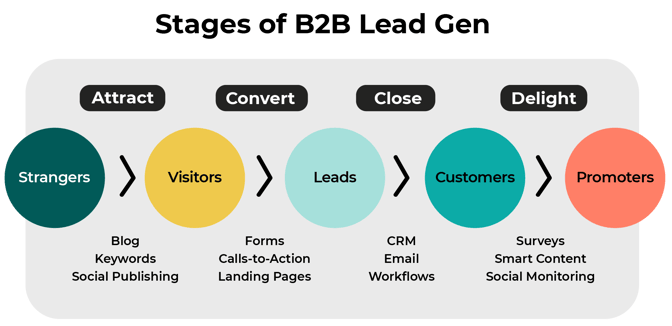
Sorry, but it’s not actually as simple as it sounds.
B2C brands sell products directly to the consumer, while B2B brands have to sell not just to one individual but to an entire business. And that’s a whole different ballgame.
As a B2B brand, you also can’t expect to find your leads in the same places as B2C. So traditional advertisements and social media might get some leads into your funnel, but going after such a broad audience for such a specific product just wastes your time and money. Plus, hoping to find the right leads amongst all the traffic? Needle, meet haystack.
It all boils down to this: B2B lead gen is its own beast, and you have to know how to wrangle it if you want to get results. But before we go any further, you need to know the different types of B2B leads you’ll be encountering along the way.
Types of B2B Leads
Sadly, not all leads are created equal. But once you understand the difference between them, you’ll be better equipped to adapt your lead gen strategy to acquire each specific type.
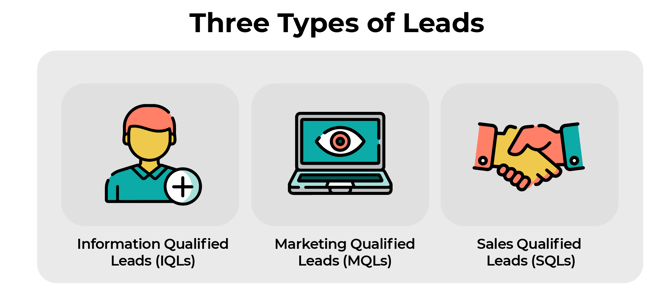
Within the realm of B2B, many marketers rely on the BANT methodology for lead qualification. What’s BANT?
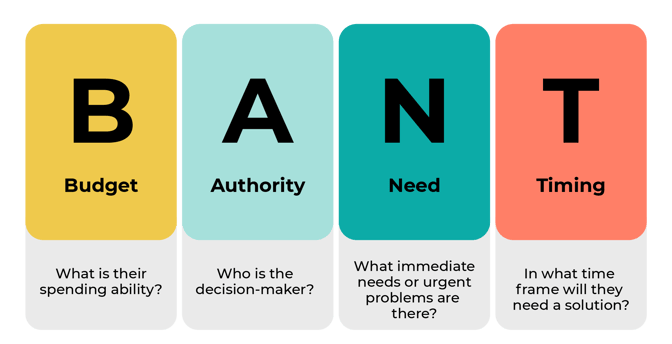
The number of qualifications determines which type of lead you have. Typically, meeting one criterion means a lead is just entering the funnel, but as more criteria are met, they begin to journey through the types of lead qualification.
Generally, your leads will go from cold to warm. Cold leads are unaware they’re being targeted. They get warmer as they become more receptive to your lead gen tactics and eventually may warm up enough to be interested in conversion. You may also target already-warm leads specifically. Those will include leads who’ve already shown some interest in your brand, whether it’s because they signed up for a newsletter or filled out a form on your website. The types of leads run the gamut from cold to warm.
Information qualified leads
IQLs fall at the cooler end of the spectrum. They are only just entering your funnel, so they’re generally unaware of your brand or even that they have a problem your brand can solve.
They did, however, know enough to understand that they need more information, and that’s what drove them to give up their personal details — whether they wanted to download a whitepaper, access a free course, or get your gated content.
IQLs are necessary for top-of-the-funnel lead gen, but be wary — IQLs are prone to using then losing you. They want the information and they’re willing to trade their email address for it, but for many, no amount of nurturing will keep them in the funnel.
IQLs are the love ‘em and leave ‘em bad boys of qualified leads. You’ll always need them more than they need you. Still, there’s some hope of a happy ending because a handful of IQLs will continue to move down your funnel and become…
Marketing qualified leads
Let’s say you nurtured your IQLs by offering them a webinar or free trial, and they actually followed through with the next step.
These warmer leads are MQLs. MQLs are generally more receptive to lead nurturing because they have an established interest in your brand and how it can solve their needs. At this point, MQLs generally know they have an issue, and now they’re looking for solutions.
While they know your brand now (and likely some of your competitors), they aren’t quite at the decision-making stage yet. This is your opportunity to move them further down the funnel by offering branded content, which may include catalogs, spec sheets, insider how-tos, and exclusive deals or discounts.
Sales qualified leads
SQLs are the hottest leads and by far the most likely to become conversions. These leads have already taken advantage of your top and middle-of-the-funnel content — completed a course, sat in on a webinar, etc. — and they’re still on the hook.
This is where you’ll want a seamless hand-off from marketing to sales and where it helps to have a strong sales enablement strategy.
These leads have arrived at the bottom of your funnel, and they’re now in the decision stage, so they’re ready to pony up the money…if they choose your brand.
Generally speaking, you’ll want all three types of leads in your funnel, so you’re always getting more IQLs in at the top as your SQLs convert at the bottom.
What Do B2B Clients Want Right Now?
The days of constant travel, professional conferences, and swanky shmooze-fests are officially over. The last few years have drastically altered the B2B lead gen landscape, and the setbacks have at times seemed insurmountable.
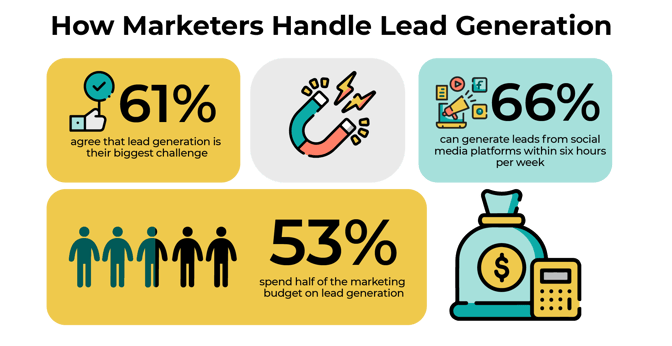
Part of the shift was brought about by the pandemic, which halted the in-person events that most B2B salespeople relied on to source new leads.
Now, they’re adapting to a remote era of sales and relying more on marketing to do some of the legwork, especially for SaaS and startup brands. In response, marketers are ramping up their lead gen budget and looking for new places to find leads. In most cases, those places are on social media, namely LinkedIn and Twitter. Both have proven to be invaluable sources of B2B leads.
So, what do B2B clients want now? They want content. They want the information they need to solve their problems. They want to be nurtured in a way that doesn’t feel intrusive or forced and that meets them where they already are. Wondering how you can give them what they want in a lead gen campaign? We’ve got you covered.

17 of the Best B2B Lead Generation Strategies
As we’ve said, B2B lead gen is a whole different animal from B2C. While some strategies may cross that divide, for the most part, you’ll want to implement different tactics for a B2B audience. Here, we have 17 killer ideas that will get leads in your funnel and move them through to conversion.
#1: Assemble the perfect go-to-market team
Whether you’re a Marvel fan or DC fan, you know this: having the right team makes all the difference. What would the Avengers be without Iron Man? Or the Justice League without Superman?
Fortunately, you don’t need to have supernatural powers to assemble (or be part of) an amazing lead gen team. What you do need is a team of individuals who are all committed to the cause and are ready to play their own part in achieving your shared goals.
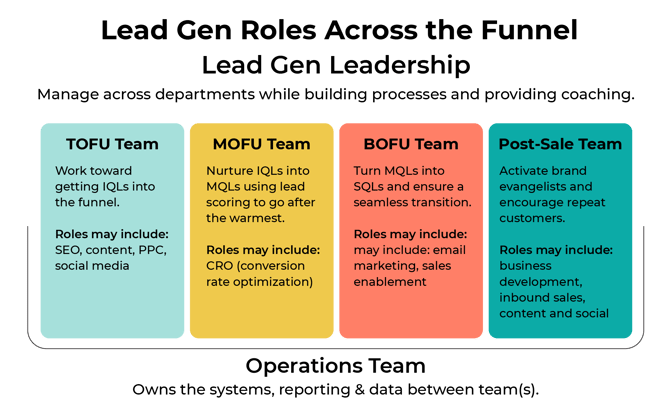
The important thing to note here is that successful lead gen will cross teams and departments. It’s critical to have a sales enablement strategy to ensure the transition between teams is smooth and seamless. But what happens if you don’t have an internal team to do the heavy lifting? That’s when you want to look for an outsourced or third-party partner to offer you the support you need. At FPS, our lead gen experts can craft a B2B strategy that helps you acquire IQLs, MQLs, and SQLs, but even better, helps you convert them into customers that keep coming back for more.
#2: Use LinkedIn to attract leads
Remember, if you want to move leads down your funnel, you need to hang out where they are. For your B2B audience, where they are is typically on LinkedIn. LinkedIn is a great place to share your lead gen content, and applying a little organic elbow grease is sure to get you new followers and potential IQLs.
However, if you have some money to put behind it, you can plan a paid social push using LinkedIn’s lead gen forms.
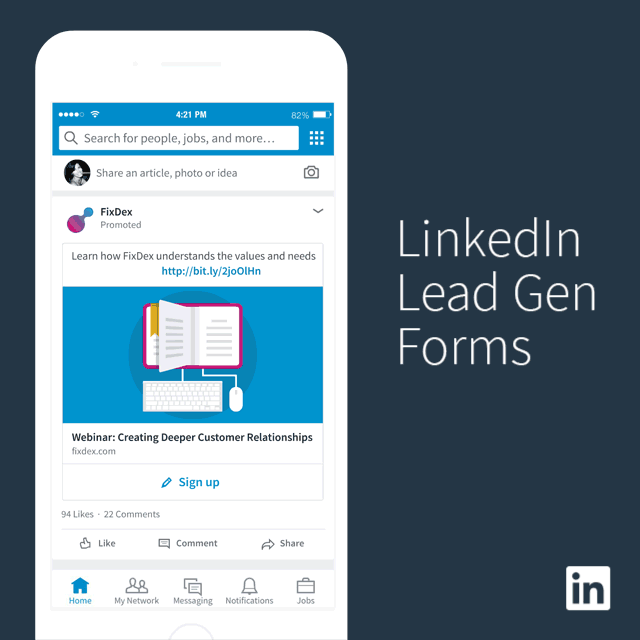
Lead gen forms on LinkedIn tackle one of the biggest lead gen challenges of all — getting potential leads to submit forms from their smartphones. With LinkedIn’s lead gen forms, you can now custom target your social audience, no matter where they are in the funnel.
Remember that LinkedIn users are looking for thought leadership and educational/learning opportunities, so make sure any lead gen content you share offers both.
#3: Create a content marketing strategy
Content should be at the heart of your B2B lead gen strategy. B2B buyers aren’t looking for fluff or slick ads — they want valuable information that serves a purpose, and that’s what you’ll need to deliver if you want them to stick around your funnel.
In spite of the importance of content to B2B lead generation, there’s a pretty shocking number of marketers who never create a documented strategy. However, those who do tend to have the most successful campaigns.
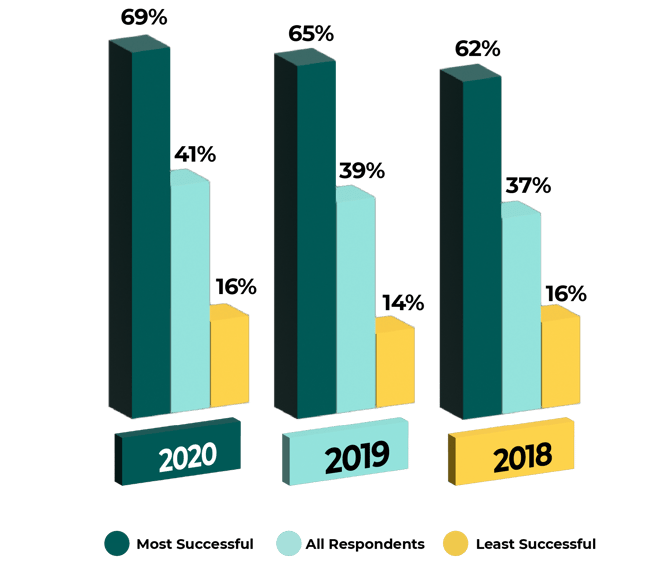
So how do you put content marketing to work for your lead gen strategy? Here’s how:
Prioritize long-tail keywords
Long-tail keywords sound complicated. Who wants to rank for “purple polka dot women’s shirts” when you could rank for the much higher volume “women’s shirts” and get all that traffic instead?
Here’s the deal: People searching for “women’s shirts” might be interested in browsing what you’ve got to offer, but they’re also looking at all your competitors, so they aren’t too likely to convert. Someone searching for “purple polka dot women’s shirts,” on the other hand, will be thrilled to find that you’ve got exactly what they’re searching for, and therefore they’re far more likely to convert.
Make sense?
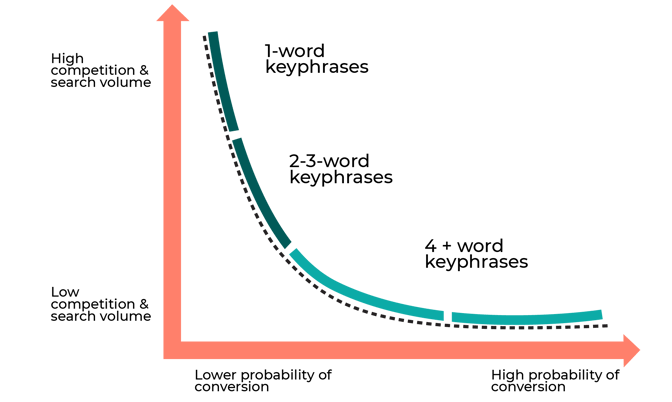
With long-tail keywords, you’ll be up against less competition and more likely to win conversions. While the example above was B2C, the same basic ideas hold true for B2B as well. If someone is searching for a product or service you offer, you want your keywords to be as specific as possible so your leads are already warm when they jump into your funnel.
Conduct competitor analysis to learn what works for competitors
Speaking of the competition, you’ll want to know what they’re up to at all times, so you can protect your potential leads (or snatch them out of their claws). A competitor audit will help you do that. You can use an SEO tool like Ahrefs to find out what keywords they’re ranking for, so you can work to outrank them, either organically or with paid search.
You can also conduct searches for your brand and your competitors. The results will give you insight into what your audience is really looking for. Check out the “People Also Ask” section in Google results to find other opportunities to rank for new long-tail keywords as well.
Create content that helps your target audience understand your core offerings
The B2B audience is driven by learning. They crave information and want to know how things work. They are also outcome-focused, so anything you produce should lean heavily on the outcomes they can expect from using your product or service.
Remember to keep content simple, narrow, and clearly focused. Instead of creating piles of scattered marketing collateral, hone in on a few key pieces you can share on your site and across your social media platforms.
Create evergreen content that continuously generates leads
Evergreen content is that which is relevant no matter when a lead accesses it. It is not dated or reliant on a particular time frame. What’s even better is that it is a cost-efficient way to manage your content. You can create and publish evergreen content at any time, and you can come back to it and refresh or repurpose it to maximize your impact. And what’s more, over time, evergreen content just performs better than dated or timely content.
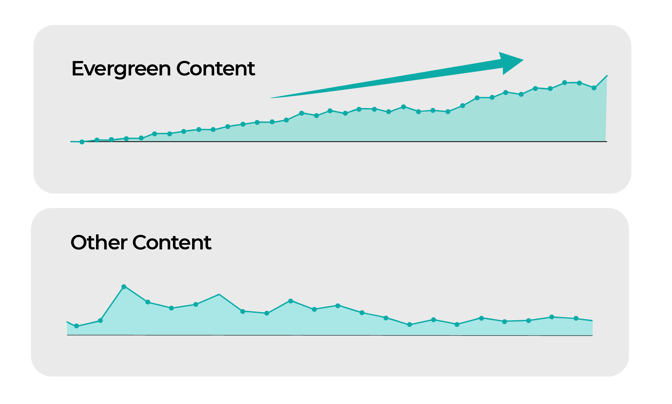
Your evergreen content will continue to pull in new leads without you doing much to it. However, as mentioned above, you can also choose to update it to get even more out of it.
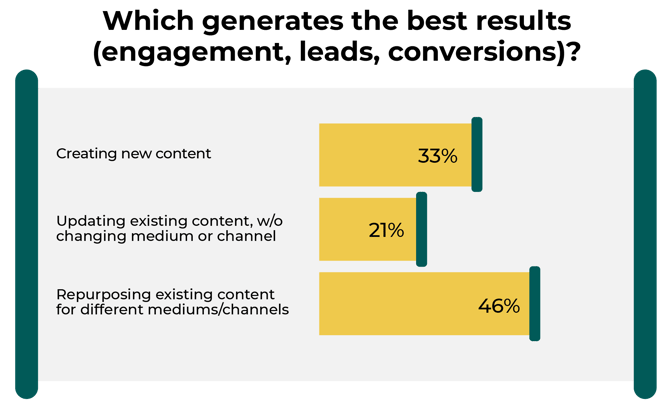
Conduct and publish original research
Primary research is a huge driver of new leads, particularly within the B2B audience who are focused on acquiring new knowledge.
Publishing your original research offers numerous benefits to your brand. For one, it positions you as an automatic thought leader in the subject you’re researching. It can also get more eyes on your brand if it’s picked up by another publication. And it fulfills your audience’s need for data and information.
Remember that these potential leads want to know all about your product and how it will solve whatever problems they’re experiencing. But it doesn’t come easy. In fact, most B2B buyers see 13 pieces of content before they make a purchase decision.
Luckily, research is a pretty heavy hitter. They can argue fluff, but they can’t argue data.
Tap into alternate audiences with guest posts
Guest posting is one of the top tactics used by outreach specialists to build links and increase authority for a brand’s website. A successful guest post will get your brand in front of an entirely new audience and should significantly increase traffic to your site. In fact, you might see anywhere from 50 visits up to 500.
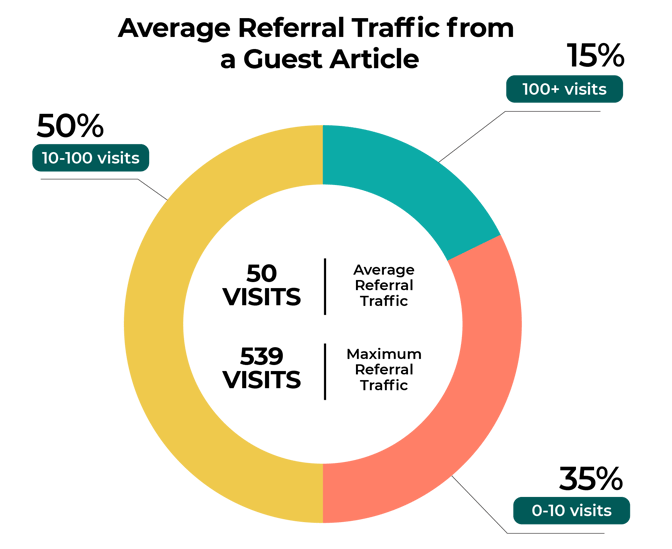
An added benefit of guest posting is that it seriously boosts your search rankings and plays an integral role in your comprehensive SEO strategy.
Create viral content that gets social shares
Viral content isn’t just a happy accident. You can work toward creating content that goes viral and use it to get your leads engaged and moved further down your funnel.
The first and probably most important pillar of viral marketing: It makes people feel something (usually a good sort of something).
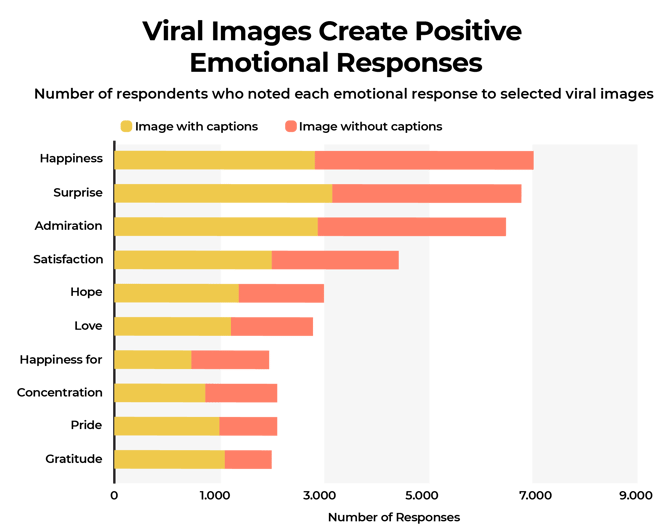
You can also incentivize leads to make your content go viral. Once you create something that evokes a strong emotion, you can offer some goodies in exchange for social shares. That might be exclusive discounts, contest entries, or product upgrades.
Publish more case studies
We’re not saying that B2B buyers are nerds, but they really do love their data and numbers. One of the best ways to showcase that information is through a case study.
In addition to sharing the indisputable facts and outcomes of using your product or service, a well-executed case study will help B2B buyers make a case of their own. Most of the time, your B2B audience needs to get buy-in from their higher-ups — sometimes numerous times. Giving them well-developed and in-depth case studies makes their job easier and makes you more likely to get a conversion.
Answer questions on forums like Quora and Reddit
When we say, “be where your audience is,” we often mean social media. But remember that there are probably other places they’re hanging out online, and they might very well be looking for product recommendations and reviews in those places.
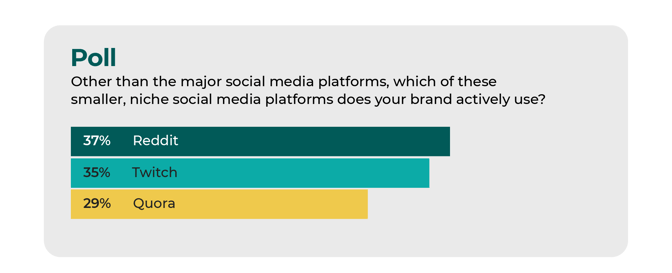
Always search Quora and Reddit for users asking questions about your brand, your competitors, or the products or services you provide. It’s a great way to engage with and win leads, and it boosts your reputation as a thought leader.
#4: Optimize landing pages for conversion
Getting traffic to your site is one thing, but keeping them there long enough to get them to convert is something else entirely. You’ll want to make sure your landing pages are optimized to provide a great user experience and offer a clear end goal.
Don’t be afraid of a long landing page. As long as it isn’t too cluttered or difficult to navigate, a landing page with more information will probably outperform all your shorter landing pages. In fact, longer landing pages can generate up to 220% more leads.
Here are a few landing page tips to keep in mind:
- Only include one single CTA throughout.
- Position the CTA at critical locations — above the fold, in the sidebar, and at the bottom of the page.
- Use your top keywords throughout the page.
- Don’t link to or mention other others/promotions — keep the focus singular.
- Make forms simple, quick, and easy.
- Include an estimated time to read or time to complete a form.
#5: Video marketing
Video marketing is a popular choice for lead gen, whether it’s B2C or B2B. Though the strategy behind each will differ, the results show that video marketing is consistently a high producer of qualified leads.
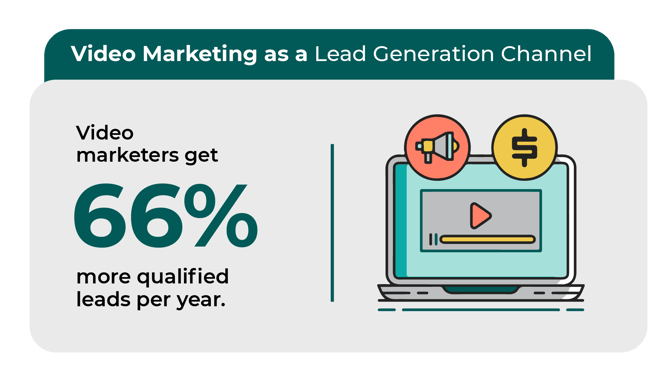
So how should a B2B brand utilize video marketing? Here’s how:
Educate with YouTube videos
Remember that your B2B audience wants to learn something, so when they watch one of your videos, that comes with certain expectations. They expect to be informed and enlightened, and they expect you to be the expert on the subject.
Fulfill all of that by creating in-depth YouTube videos about your product, service, or industry. Remember that YouTube is the second-largest search engine, so be sure your videos and descriptions contain your most important keywords.
Live videos
Your leads might be more likely to respond if they feel they’re part of the conversation and not just watching a canned video. Live videos like webinars, events, or unscripted content like AMAs (ask me anything) allow your leads to become participants with your brand and encourage them to stay on the hook and in the funnel.
Send personalized videos to qualified leads
Remember when we said that B2B lead gen has been changed forever by the remote revolution? It has. With events becoming less commonplace and most communication happening digitally, it’s important to look for new ways to personalize your strategy and create real and authentic connections with leads.
One way to do that is through a personalized video. This is most successful when used as a precursor to a live, real-time connection, like a phone call or video chat. Record a video that’s casual and informal, and be sure to use your lead’s name. Speak to them with authenticity, and you might find they’re much more open during face-to-face (or voice-to-voice) communication.
#6: Leverage distribution platforms to push content to market
Where you push your content is every bit as important as what content you create. The most effective channels for content promotion and lead generation vary depending on whether you’re planning a paid or organic content strategy.
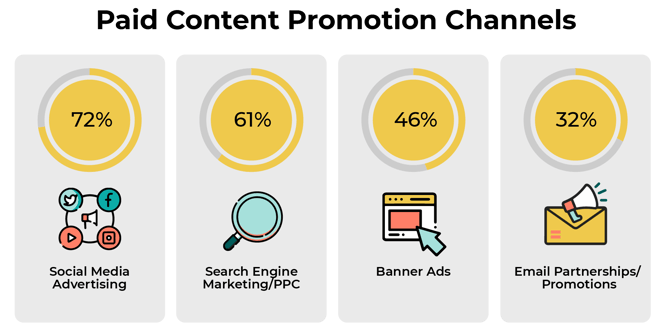
With paid marketing, social media and paid search get the best results. Results with paid campaigns also come much quicker, so if you’re looking for fast traffic and revenue, that might be your best bet. Organic, on the other hand, typically takes longer and needs a carefully planned strategy for both content and SEO. Social media is also incredibly popular, but for B2B marketers, the platform you choose is absolutely critical.
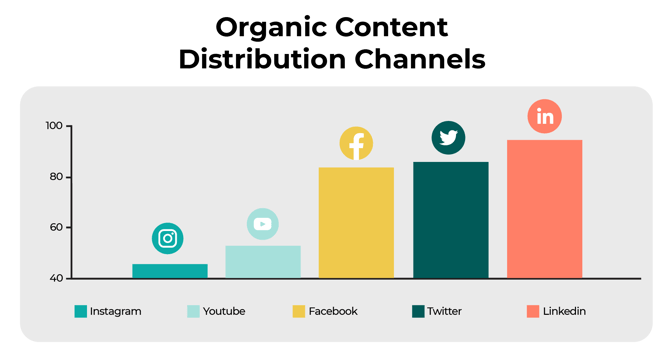
As we’ve mentioned, LinkedIn is the top spot for B2B content promotion. But you probably won’t find your audience on Instagram, so keep that in mind when building your content strategy.
#7: Grow your email list
Email marketing went through a slump a few years ago, but now it’s back and better than ever, especially when it comes to B2B leads. In fact, it’s been rated the most effective tactic you can use for B2B lead gen.
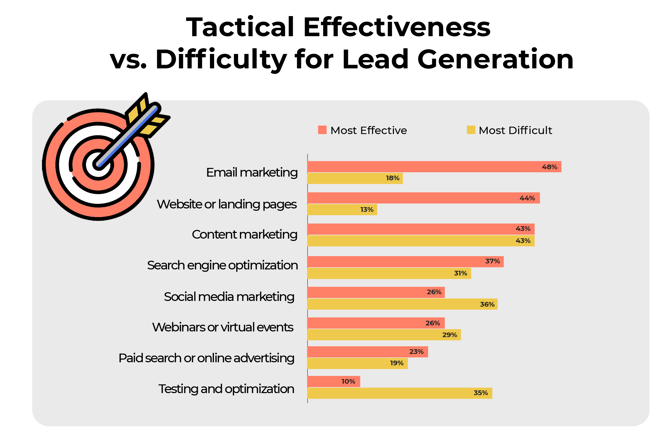
Warm up your cold leads with a funny email…
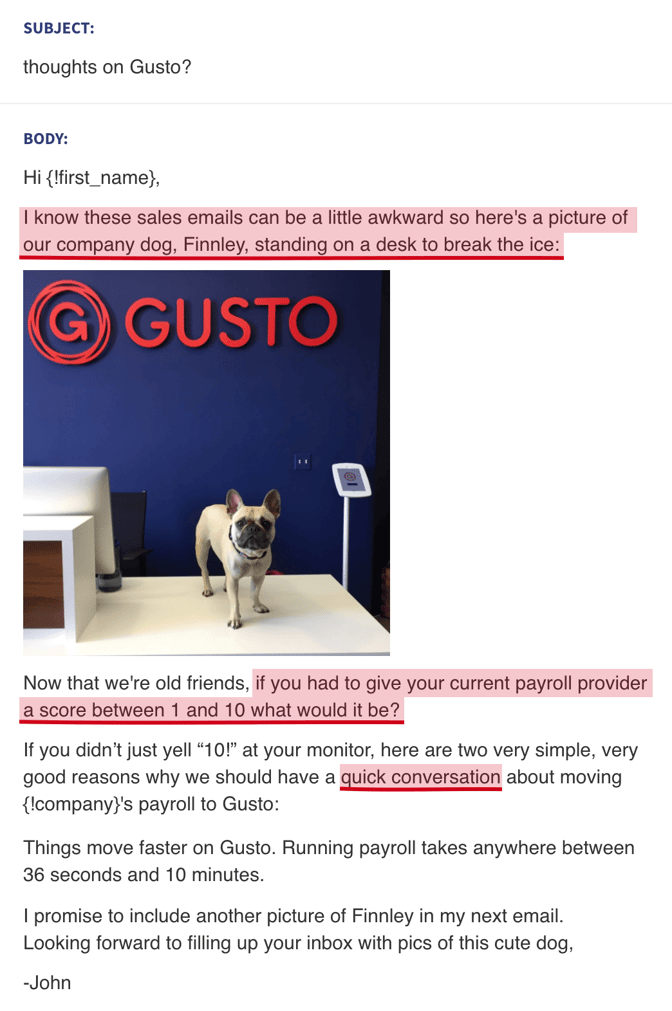
…or tempt MQLs with exclusive sneak peeks on major product launches and updates.
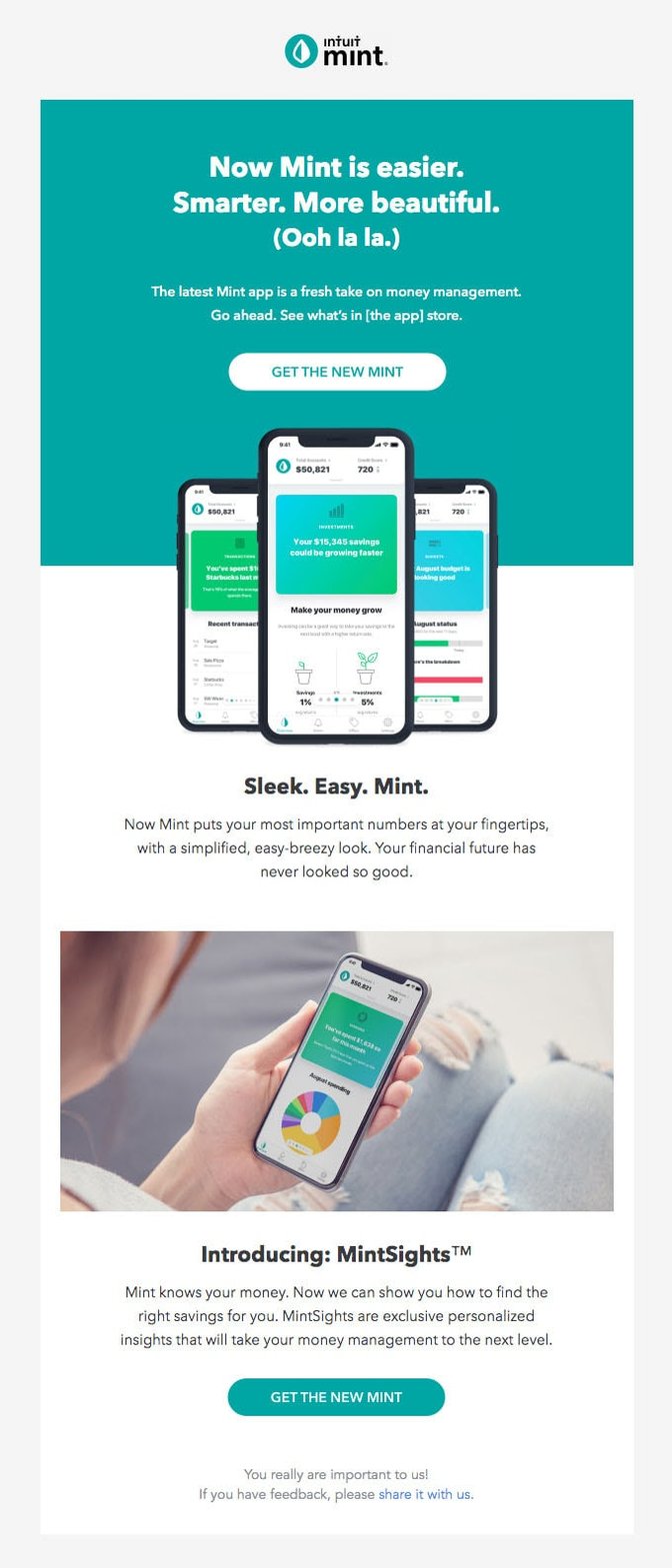
Your email list is your old reliable. It’s the safety net that will be there when your other tactics aren’t getting the results you want. Just remember to clean it up regularly to maximize your results.
#8: Collaborate with B2B companies offering complimentary products
Collabs are all the rage right now, but they aren’t just for TikTok videos. Look for brands that offer services or products that complement your own. For instance, if you provide project management software, you might partner with a calendar or scheduling app that you can integrate into your own product.
Do some research, and start reaching out to brands that might be amenable to a mutually beneficial partnership.
#9: Sales and demand generation should work together
What is demand generation, and how is it different from lead gen? Demand generation usually happens at the top of the funnel and is mostly concerned with brand awareness. Conversely, lead gen happens more often toward the bottom of the funnel and involves lead scoring and qualification. Lead gen is also much more likely to work closely with sales, as they are nearer to the conversion point.
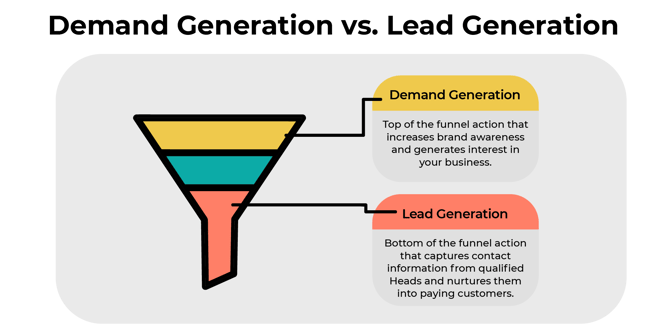
However, if demand gen isn’t also working with sales, it’s going to be harder to get colder leads down the funnel. It’s best to work out a sales enablement strategy that builds rapport between sales and demand gen, so by the time they get to the bottom of the funnel, the sales team knows what to expect.
#10: Use social proof to earn trust
Social proof doesn’t have anything to do with social media. In fact, it’s way more old school than that and dates back to the original form of advertising: word-of-mouth. Social proof is made up of all the cues we get from the world around us that tell us that a brand is something we want to try.
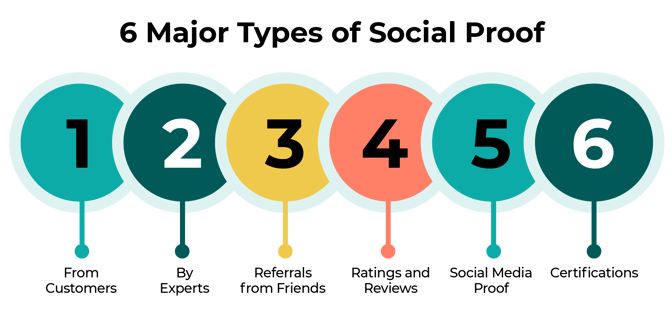
It’s a fact that most consumers are more likely to purchase something that someone else they know and trust has purchased, and it’s no different for B2B buyers. This is why case studies that feature real customers are so powerful. Also consider prominently displaying your reviews and ratings and any professional certifications or awards.
#11: Include live chat on your website
Live chat is now the preferred method of communication for most B2B buyers. Want to know why?
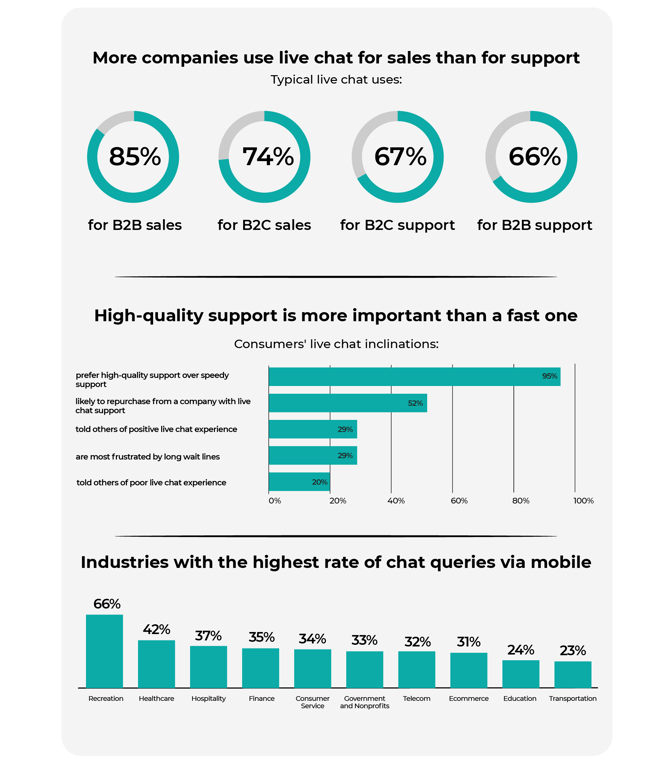
It’s interesting to note that B2B uses live chat for sales far more often than B2C or for its most common usage, customer support. The speed and accuracy of live chat make it a perfect avenue for nurturing leads and helping them through the funnel.
#12: Use pay-per-click to get quick results
As we mentioned earlier, if you’re a B2B brand that needs to make sales now, you can’t really find a better way than PPC or paid advertising. It’s cost-effective and fast. For unestablished brands or startups, it also provides an opportunity to play in the sandbox with your biggest competition. When you’re paying for ad space, you can outrank even a long-established company that’s put years into SEO.
What types of paid ads should you be using?
Google ads
Google ads often come in the form of paid search. These are the SERP (search engine results page) listings that appear at the very top of results. They are always clearly marked as an ad, but they are a powerful tool to get you to the top of the pack, quickly.
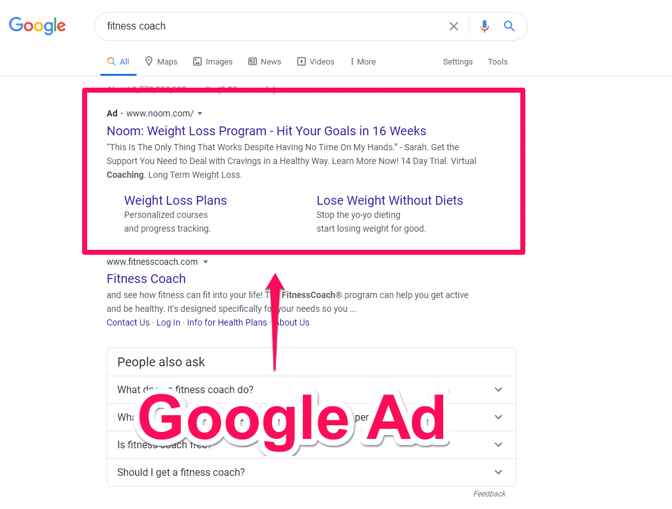
You can also use Google Ads for display ads, which are banners or sidebar visual ads that appear on various websites. All Google Ads can be highly targeted so you can hit the exact audience you’re looking for, usually by selecting your priority long-tail keywords.
Facebook Ads
Facebook Ads are extremely versatile and reach a vast audience. Even though LinkedIn is best for B2B, you can’t beat the reach you’ll get with Facebook. Plus, Facebook allows you to create a seemingly endless array of ad types, so you can keep things fresh and interesting.
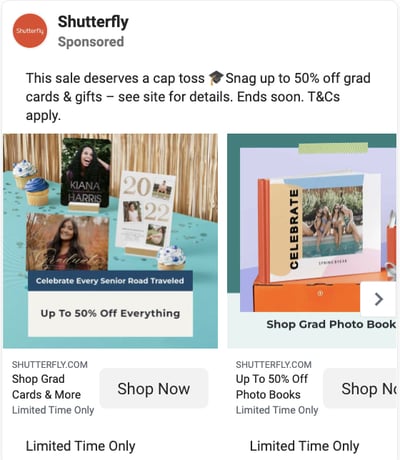
Shopping ads, image carousels, videos, and more will make your ads stand out.
Use retargeting and remarketing to convert visitors
Retargeting is one of the most effective ways to push leads through the funnel, especially when you’re trying to transition MQLs to SQLs. Your audience has already shown some interest in your brand, either by clicking on a previous ad or visiting your site. Now is your opportunity to appeal to them again, with an exclusive offer or an urgent countdown that a deal is about to expire.
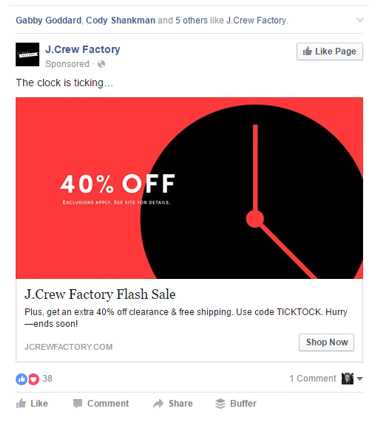
Leads in your retargeted audience are much more likely to convert.
#13: Make it easy for leads to book a demo
How many clicks does it take to get to a real person? If it takes too many, your leads are likely to bail. You want to create a form or live chat submission process that is simple, quick, and easy, so your leads can book a demo without hassle.
If you combine this with a frictionless onboarding process in the post-sale stage, you’ll end up with highly satisfied customers that are more likely to give you referrals and put new leads into your funnel.
#14: Use freebies to generate leads
The best B2B brands have one thing in common: they give away their best product for free.
Sounds like bad business, right?
Wrong. Turning your top product into a freemium or forever-free model is one of the top ways to get a consistent stream of warm leads.
Just like Buffer, one of the top social media management tools, offers free access to its platform:
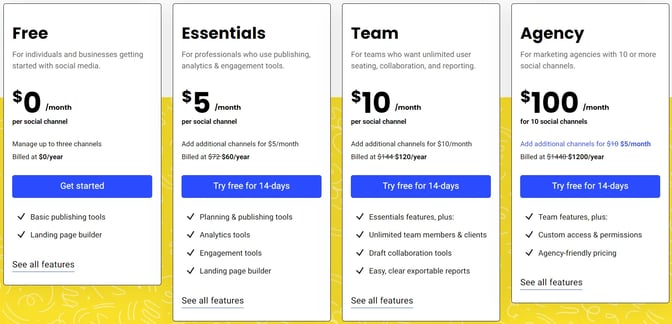
Or how design tool Canva has a forever free plan:
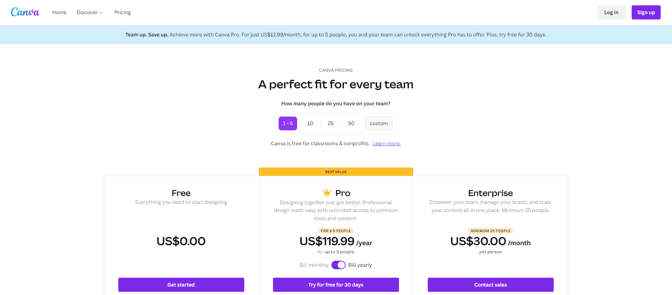
Freebies are even better than demos or trials because the commitment is so low for leads to get on board. Once they do, you can sell them on premium packages and upgrades based on their needs.
#15: Diversify your efforts with social media
Social media is a melting pot of cultures and backgrounds, and some of the most powerful branding is happening there. As we mentioned, LinkedIn is your priority when it comes to building social media strategy, but you shouldn’t ignore other platforms. In fact, just be sure you’re not ignoring social at all.
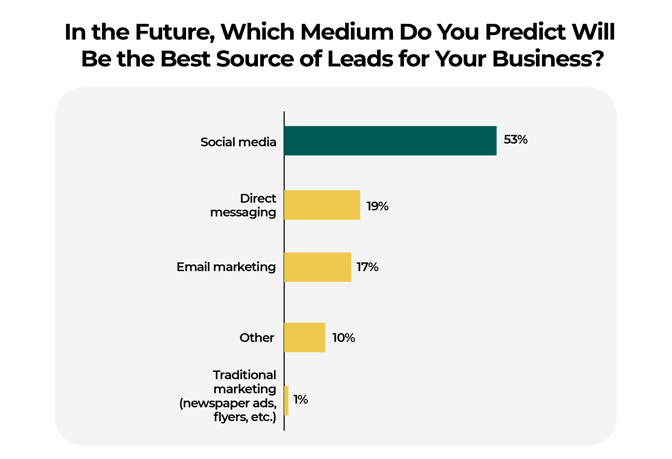
Be sure to check out what your competition is doing on social — which platforms they’re most active on, how they engage with followers, and what they’re posting to find new leads — and then borrow their ideas where you can.
#16: A/B test everything
A/B testing is such an easy thing to do but often gets overlooked when implementing a complex B2B lead gen strategy. However, A/B testing everything you do is crucial to your overall success.
The most important fact to remember with A/B testing is that you should only test one element at a time. That might be the copy for a PPC ad, a headline on your landing page, or the CTA that should drive your leads to convert. This is a simple method of testing that delivers clear results.
#17: Measure results
Some results will be obvious — if you’re getting more traffic and more sales, you’re doing something right.
But what if things aren’t working exactly as you’d hoped? Digging into the data will give you the insights you need to correct course and adapt. If you’re struggling to get leads into your funnel, maybe you need to take a closer look at your buyer persona or the social media channel you’ve invested the most in.
Or if your content is killer, but conversions are low, look carefully for where your warmed-up leads are jumping ship. If it’s right before they seal the deal, there could be a hiccup with your sales enablement strategy and the handoff from marketing.
You want to keep an eye on all the results — not just the good ones. Often, those vanity metrics paint a lovely picture, but they obscure the view of what’s actually happening. Remember — numbers don’t lie. So dive deep, even when they aren’t the numbers you want to see because they will always be your source of truth.

Conclusion: Get Results-Driven Strategies from a Top B2B Lead Generation Company
We know this all sounds like a lot. That’s because it is a lot. And if you don’t have an extensive team of marketing pros, sales enablement folks, demand generation, and lead generation experts, it’s going to be hard to make this happen.
That’s where we come in. At FPS, we’ve got the lead gen experts who understand the process and the funnel end-to-end. Whether you want cold leads pouring into your funnel or the hottest leads coming out and returning as brand advocates, we’ve got you covered. Contact us today to learn more about how we can build a B2B lead gen strategy that meets all your needs.